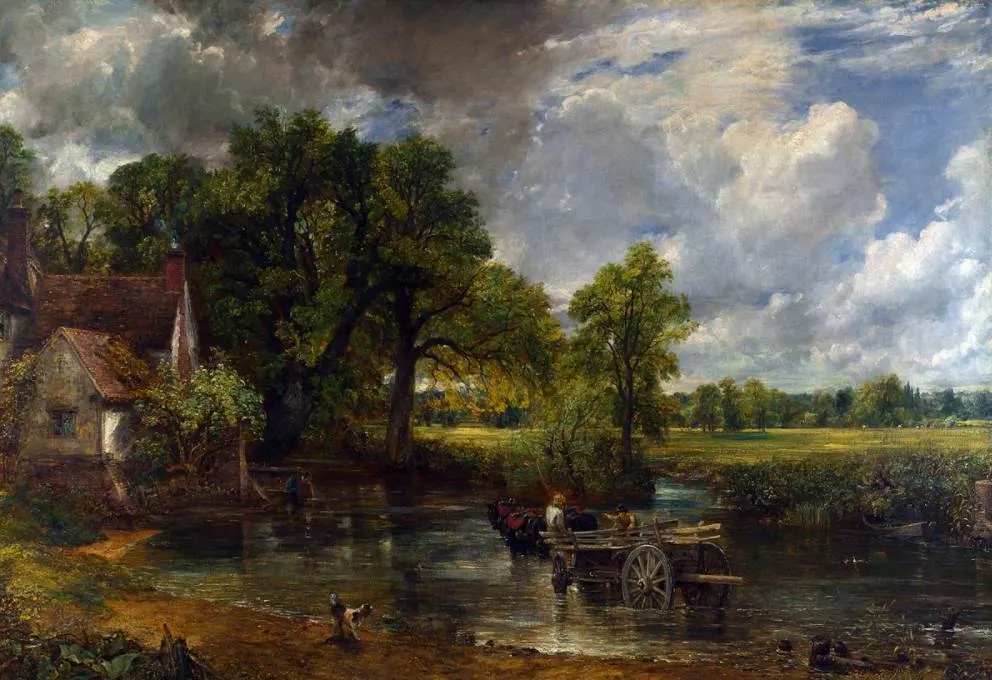One of the greatest art museums in the world is located at Trafalgar Square, one of the most popular public spaces in central London. The National Gallery was founded in the year 1824 and its collection is owned by the government in name of the British people.
The building in which the museum is housed today was designed shortly after the museum was established, even though it’s essentially the third location in which the collection has been housed.
It was constructed between 1832 and 1838 and has been expanded several times throughout its extended history. Only the Neoclassical façade facing Trafalgar Square is what remains of this original design.
The collection features over 2,300 paintings, most of them dating between the 13th and 19th centuries. The museum is free to enter and with over 6 million visitors a year (before the COVID-19 pandemic) is the 8th-most visited museum in the world.
Let’s take a closer look at some of the most famous paintings at the National Gallery in London, world treasures that you definitely must admire when you plan to visit this amazing museum.
1. Vase with Fifteen Sunflowers – Vincent van Gogh
- Date Created: 1888
- Dimensions: 92.1 × 73 centimeters (36.3 × 29 inches)
Vase with Fifteen Sunflowers is one of the paintings in the Sunflowers series by Vincent van Gogh. The Post-Impressionist artist created many of these during his stay in Arles and was meant to decorate the Yellow House which he was renting.
The main goal of van Gogh was to impress the artist he invited, Paul Gauguin, to establish an art colony in this small town in southern France. He eventually ended up suffering a mental breakdown which eventually culminated in his suicide 2 years later.
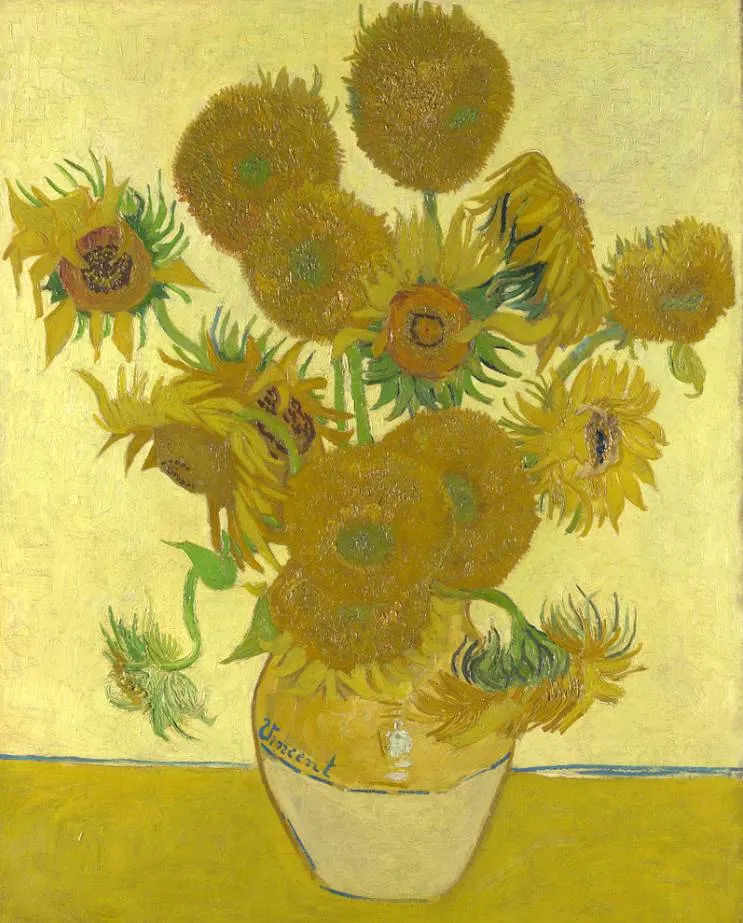
2. Arnolfini Portrait – Jan van Eyck
- Date Created: 1434
- Dimensions: 82.2 × 60 centimeters (32.4 × 23.6 inches)
The Arnolfini Portrait is one of the most famous works in the oeuvre of Jan van Eyck, the Early Netherlandish painter, and pioneer of the Renaissance in the northern part of Europe. It was most probably painted inside a house in Bruges where he worked at the time.
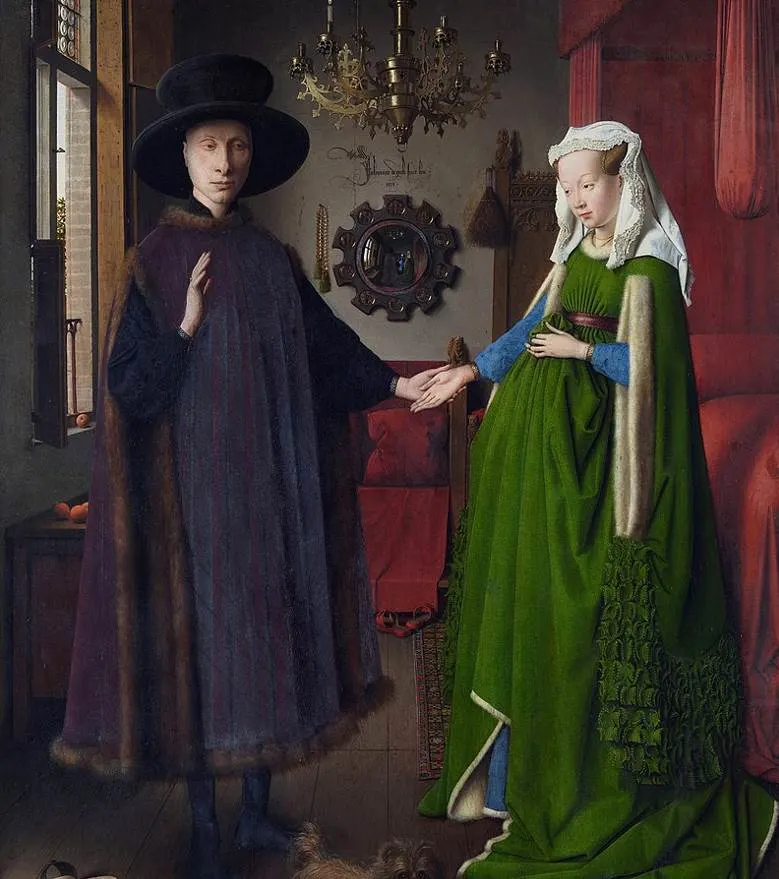
The level of detail is something that characterizes the works of Jan van Eyck and this becomes clear in this incredible work of art. It remains unclear what the exact subject of the painting entails, even though it’s fairly certain it depicts Italian merchant Giovanni di Nicolao Arnolfini and his wife.
3. Virgin of the Rocks – Leonardo da Vinci
- Date Created: 1495-1508
- Dimensions: 189.5 × 120 cm (74.6 in × 47.25 in)

Virgin of the Rocks is one of two paintings by Leonardo da Vinci of the same theme. The original version is believed to be the painting at the Louvre while the version at the National Gallery is the restored version that was created at an unknown later date.
The painting was named for the background which appears to be a rocky cave. The painting depicts the Virgin Mary and the child Jesus Christ, along with the child John the Baptist and an angel named Uriel. Both versions are similar to each other with only minor differences.
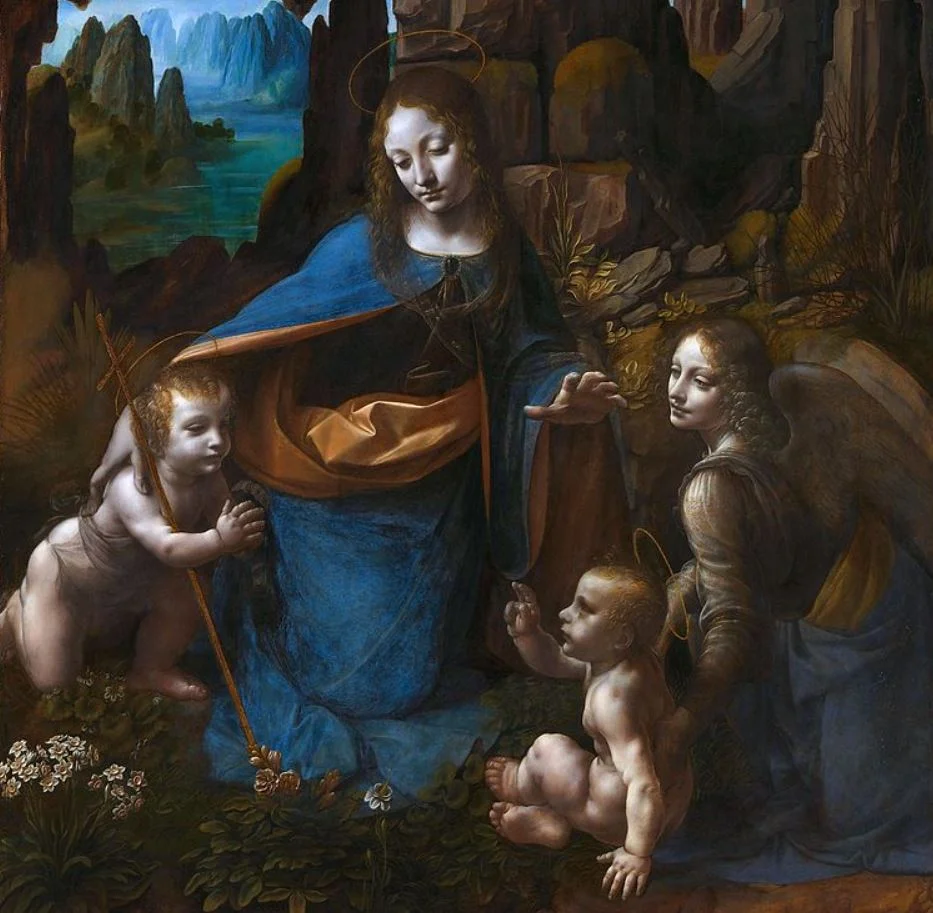
4. The Fighting Temeraire – J. M. W. Turner
- Date Created: 1839
- Dimensions: 90.7 × 121.6 centimeters (35.7 × 47.9 inches)
The Fighting Temeraire is officially known as “The Fighting Temeraire, tugged to her last berth to be broken up, 1838” and is one of the most famous works of English Romantic artist Joseph Mallord William Turner, better known as J.M.W. Turner.
The painting depicts the 98-gun HMS Temeraire, a ship of the Royal Navy that played a role in the Battle of Trafalgar in the early 19th century. The ship can be seen being towed up the Thames towards Rotherhithe in 1838, only to be turned to scrap shortly after.

5. Rokeby Venus – Diego Velázquez
- Date Created: 1647-1651
- Dimensions: 122 × 177 centimeters (48 × 49.7 inches)
The Rokeby Venus is a remarkable work in the oeuvre of Diego Velázquez, the famous Baroque artist of the Spanish Golden Age. That’s because it’s believed to be the only surviving nude by Velázquez, a man best known for his work at the court of Philip II.
It’s assumed that he created this work, which depicts a naked goddess Venus as she stares into a mirror, during his stay in Italy. During his trip, he presumably became inspired by similar nudes such as the Venus of Urbino (1538) and the Sleeping Venus (1510).
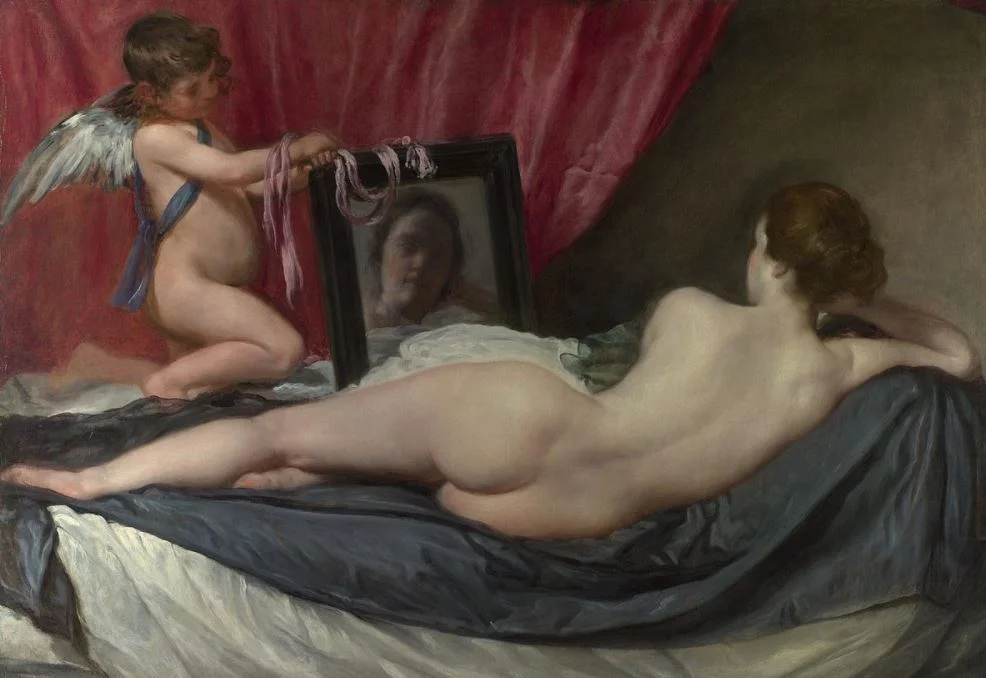
6. Samson and Delilah – Peter Paul Rubens
- Date Created: 1609-1610
- Dimensions: 185 × 205 centimeters (73 × 81 inches)
Samson and Delilah is one of the most fascinating works by Peter Paul Rubens (1577-1640), one of the most renowned artists of the Baroque period. It depicts the moment that the hair of Samson is being cut after he fell asleep on the lap of Delilah.
.A hoard of Philistine soldiers is waiting for the moment that Samson loses his strength, ready to take him in. The story of Samson and Delilah is told in the Old Testament and has been a popular subject in the history of art.

7. Supper at Emmaus – Caravaggio
- Date Created: 1601
- Dimensions: 141 × 196.2 centimeters (56 × 77.2 inches)
Supper at Emmaus is one of two paintings by Caravaggio of the same theme. The painting at the National Gallery in London is the original one while the second version of 1606 can be found at the Pinacoteca di Brera in Milan.
Caravaggio can easily be described as one of the most controversial artists in history, mainly because he was a known brawler who committed at least one murder. This painting was created shortly after he became famous after struggling for a while following his move to Rome during the 1590s.
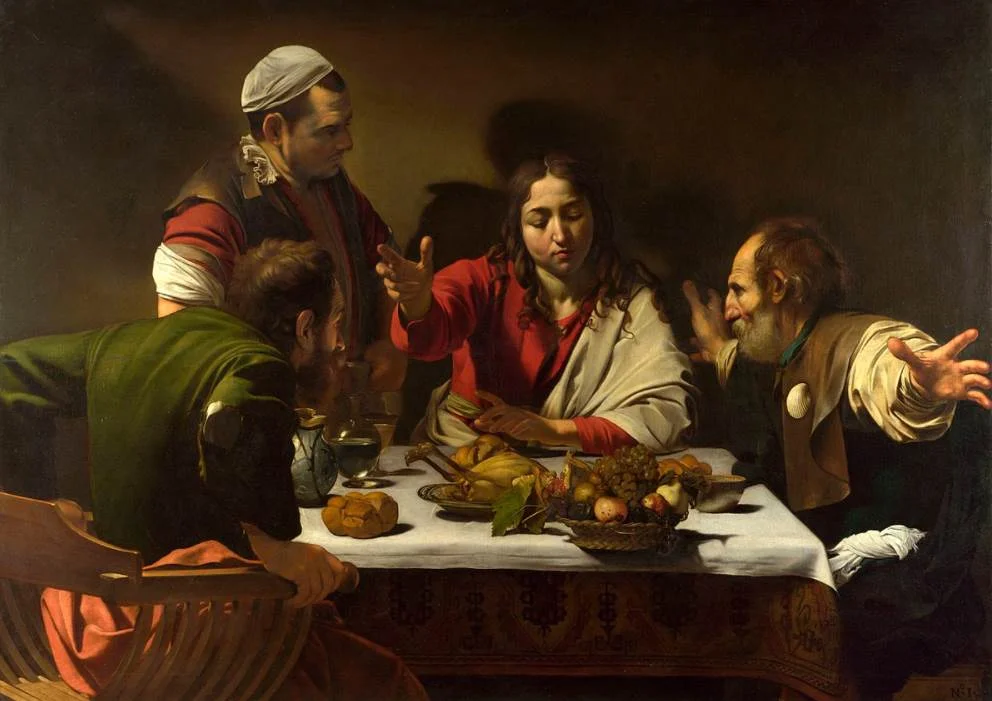
8. Portrait of Pope Julius II – Raphael
- Date Created: 1511-1512
- Dimensions: 108 × 80.7 centimeters (43 × 31.8 inches)
The Portrait of Pope Julius II depicts the great patron of the arts during the Renaissance period, Pope Julius II, shortly before he passed away in 1513. It was painted by Raphael, one of the most influential artists of the High Renaissance.
This was a period in which Raphael earned countless commissions during his stay in Rome, many of which were granted by the man depicted in this portrait. It was a revolutionary work at the time because of the incredible realism with which the pope was depicted.
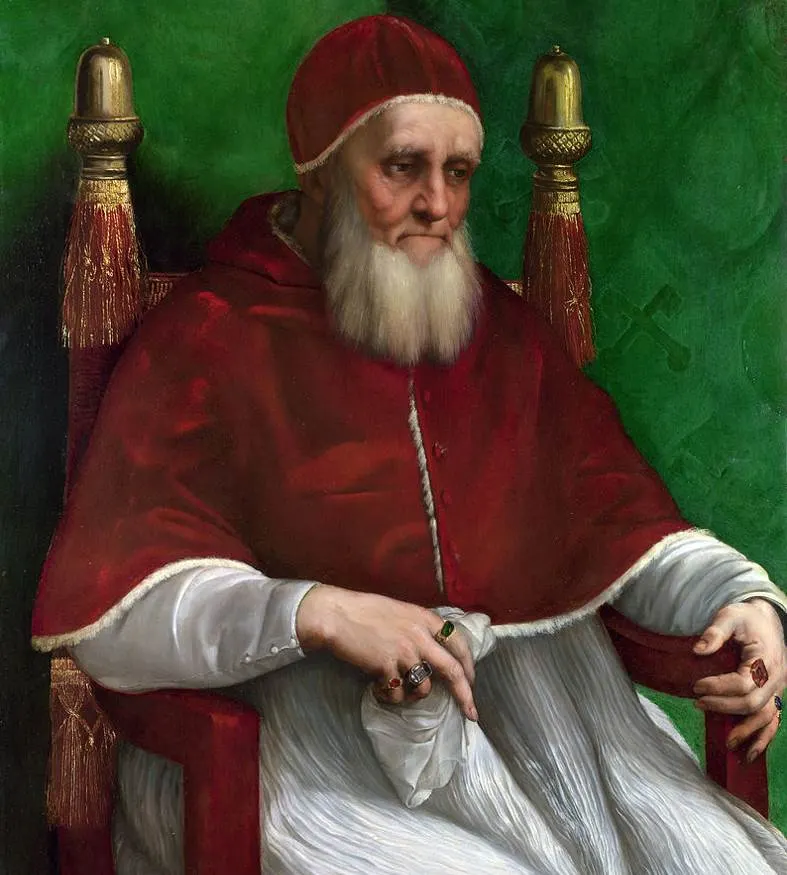
9. Diana and Actaeon – Titian
- Date Created: 1556-1559
- Dimensions: 185 × 202 centimeters (73 × 80 inches)
Diana and Actaeon is one of the works by Titian, one of the most renowned artists of the Renaissance, that was acquired by the National Gallery of London together with the National Galleries of Scotland in Edinburgh. Both museums paid a whopping £50 million for this work.
The painting depicts the moment that Actaeon walks into Diana along with her nymphs while they are bathing. Titian also captured the sequel to the story in a work called “The Death of Actaeon,” depicting the hunter being killed by his hounds.

10. The Hay Wain – John Constable
- Date Created: 1821
- Dimensions: 130.2 × 185.4 centimeters (51.25 × 73 inches)
The Hay Wain is a landscape painting by Romantic landscape painter John Constable. It depicts a rural scene near the River Stour somewhere between the English counties of Suffolk and Essex in the east of the country.
The painting is remarkable for featuring Willy Lott’s Cottage, a house in Flatford, Suffolk. This house still exists in this location, even though it was completely restored in the 1920s. It was depicted in multiple works by Constable who depicted the English countryside in a Romantic way.
